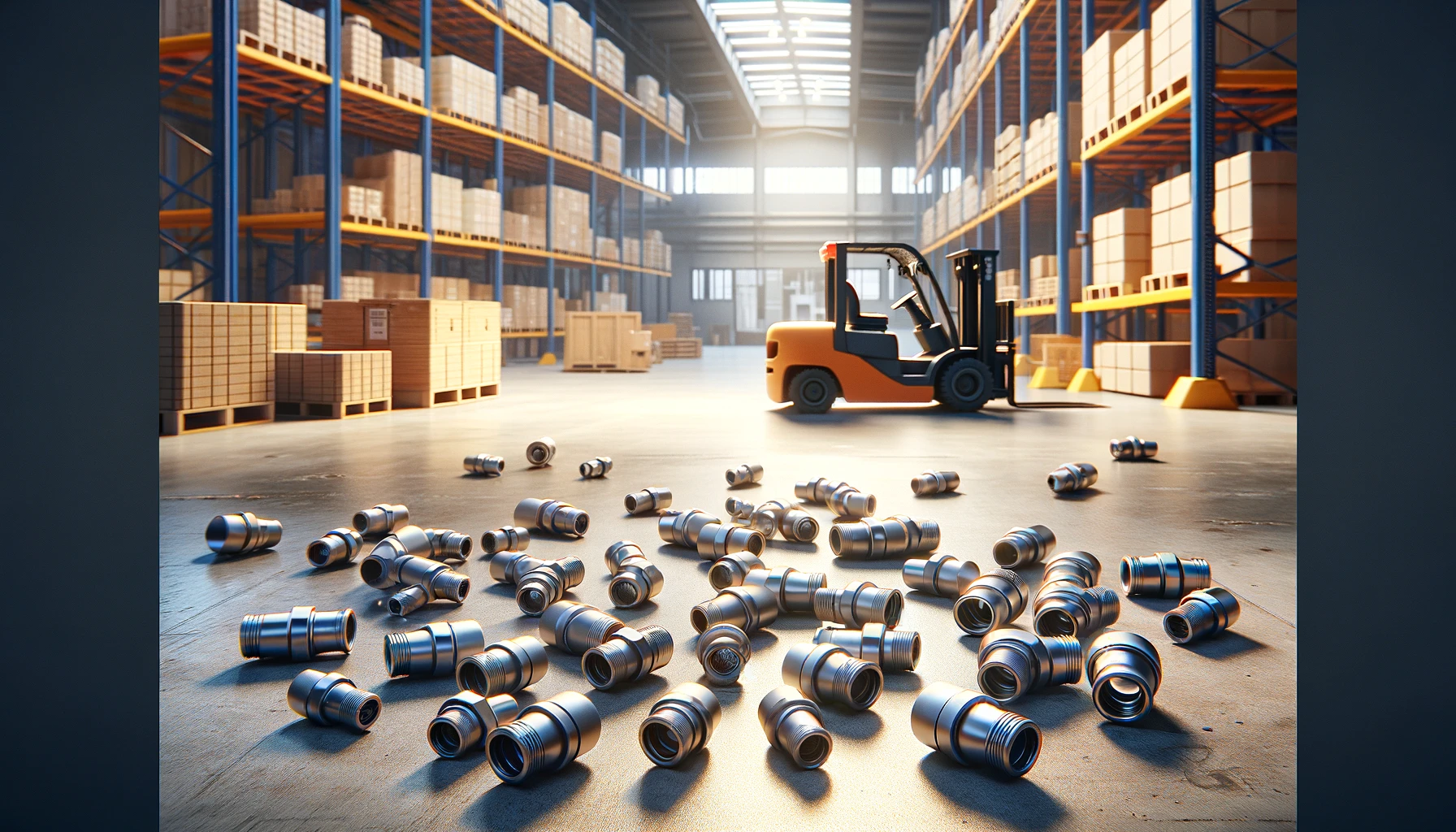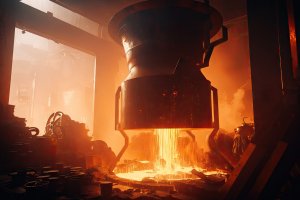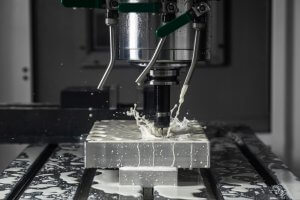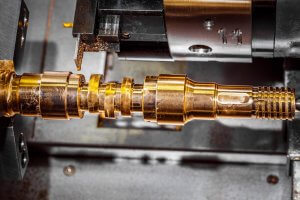Importance of Material Selection: The Basis of Rigid Coupling
Material selection stands as a cornerstone in the manufacturing of rigid couplings, directly influencing their performance, durability, and application suitability. The choice of material affects not only the mechanical properties such as strength, hardness, and fatigue resistance but also factors like manufacturability, cost, and environmental impact. In order to better understand material requirements, customers can submit material requirements through the online CNC service provided by the company, which greatly improves communication efficiency.For instance, stainless steel, known for its corrosion resistance and strength, is often preferred for couplings in marine applications, whereas aluminum, being lightweight, might be chosen for aerospace applications for its weight-saving benefits.
A notable example is the use of Titanium alloys in high-performance automotive applications. Despite its higher cost, the choice of Titanium allows for a significant reduction in weight while maintaining high strength, directly contributing to enhanced vehicle performance and fuel efficiency.
Overview of CNC Machining Technology: Balancing Precision and Efficiency
CNC (Computer Numerical Control) machining stands at the forefront of manufacturing technologies, offering unparalleled precision and repeatability. The technology’s ability to efficiently produce complex shapes with tight tolerances makes it indispensable in the production of rigid couplings. However, the efficiency of CNC machining is heavily reliant on factors such as tool selection, machining parameters, and the complexity of the design.
In producing a spline-shaped rigid coupling, the use of multi-axis CNC machines allows for the intricate geometries to be machined in a single setup. This not only enhances the precision of the coupling but also significantly reduces the production time, showcasing the balance between precision and efficiency.
Material Challenges in Rigid Coupling
Delving deeper into the material challenges faced during the manufacturing of rigid couplings, we encounter a multifaceted dilemma. Materials that offer superior mechanical properties, such as high-strength alloys, can often be difficult to machine, leading to increased wear on cutting tools and potentially longer machining times. This not only impacts the production efficiency but also escalates the manufacturing costs.
Consider the use of a superalloy like Inconel 625 in the aerospace industry, prized for its high strength and corrosion resistance under extreme conditions. The machining of Inconel 625 for a rigid coupling application presents significant challenges due to its work-hardening properties and the need for specialized tooling. The solution involves a combination of optimized cutting parameters, advanced tool materials such as polycrystalline diamond (PCD), and effective cooling strategies to manage the heat generated during machining. This approach not only mitigates the tool wear but also ensures the dimensional accuracy and surface finish required for aerospace applications.
Furthermore, the choice of material directly impacts the CNC programming strategy. For instance, when machining harder materials, slower cutting speeds and higher feed rates may be necessary, along with the use of more rigid machining setups to prevent vibrations and ensure the precision of the final product.
Enhancing Machining Precision: Innovative CNC Machining Strategies
To overcome the inherent challenges in achieving high machining precision, especially in the context of rigid couplings, manufacturers are increasingly turning to innovative CNC machining strategies. These include the use of high-speed machining (HSM) techniques, which enable faster material removal rates while maintaining accuracy. Additionally, the adoption of 5-axis CNC machining provides the flexibility to machine complex shapes and geometries in a single setup, reducing the potential for errors associated with multiple setups.
In the production of a complex geometric rigid coupling for the robotics industry, the application of 5-axis CNC machining enabled the manufacturer to achieve the intricate details required for the coupling to function correctly in a highly dynamic environment. The use of advanced CAM (Computer-Aided Manufacturing) software allowed for the simulation of the machining process before actual production, identifying and rectifying potential issues that could affect the machining precision.
Moreover, the implementation of real-time monitoring systems in CNC machining centers has been a game-changer. These systems continuously monitor the machining process, providing instant feedback on tool wear, cutting forces, and vibration levels. By adjusting the machining parameters in real-time, manufacturers can maintain the high precision required for rigid couplings, ensuring their reliability and performance in application.
Interplay between Material and Processing: Case Studies
The symbiotic relationship between material selection and CNC processing techniques is exemplified in the manufacturing of rigid couplings. This interplay is crucial for achieving the desired mechanical properties and geometrical accuracies. Advanced materials such as metal matrix composites (MMCs) and ceramics present unique challenges due to their inherent properties but also offer significant advantages in terms of strength-to-weight ratio and wear resistance.
The use of Aluminum-Silicon Carbide (AlSiC) composite in a high-performance motor coupling illustrates this interplay. The exceptional thermal conductivity and low thermal expansion coefficient of AlSiC make it ideal for applications requiring high thermal stability. However, the abrasive nature of Silicon Carbide poses significant machining challenges. The solution involved the use of diamond-coated tools and optimized machining parameters to effectively machine the composite material, achieving the required precision and surface finish.
Another example involves the machining of a zirconia-toughened alumina (ZTA) ceramic coupling for a high-temperature application. The brittleness of ceramics requires a completely different machining approach, often involving ultrasonic machining or laser cutting techniques. The successful machining of ZTA for the coupling demonstrated the critical importance of selecting the appropriate processing method based on the material properties, ensuring the coupling’s performance in extreme conditions.
Future Trends: Technological Advances in Rigid Coupling Manufacturing
The future of rigid coupling manufacturing lies in the intersection of materials science and advanced manufacturing technologies. Innovations such as additive manufacturing (AM) are set to revolutionize the way rigid couplings are produced, offering the ability to create complex geometries that were previously impossible or too costly to machine using traditional methods.
Related Posts
- Precision CNC Machining for High-Performance Industrial Machinery
Precision CNC Machining for High-Performance Industrial Machinery The process of Precision CNC (Computer Numerical Control) machining is at the core of manufacturing high-performance industrial machinery. This technique leverages a computer's…
- CNC Machining for Medical Applications: Compliance and Material Selection?
Introduction to CNC Machining in Medical Applications CNC or Computer Numerical Control machining is a manufacturing process wherein pre-programmed computer software dictates the movement of factory tools and machinery. This…
- Material Versatility in CNC Machining: From Titanium to Thermoplastics
Introduction to CNC Machining CNC machining stands as a cornerstone in the manufacturing sector, enabling the precise creation of parts and components. This process utilizes computer numerical control (CNC) to…








